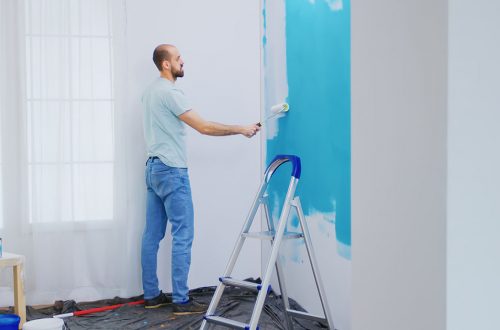
6 Pro Tips for Achieving Perfect Texture in Your Paintings
Achieving the perfect texture in your paintings can transform a flat image into a tactile sensation that invites viewers to touch it with their eyes. Here are six professional tips to help you master texture in your paintings.
What is Texture in Painting
Texture in painting refers to the perceived surface quality of the artwork, whether it be smooth, rough, soft, or hard. Artists can achieve texture through various mediums, techniques, and tools. The answer lies in how these textures can convey emotions, tell stories, and create depth.
1. Choose Your Tools Wisely
Selecting the right tools is the first step toward creating compelling textures. Brushes of different shapes and sizes, palette knives, and even unconventional tools like sponges, rags, or fingers can produce unique effects. Experiment with these tools on different surfaces to see how they interact with paint, and don’t be afraid to mix tools within the same piece for varied textures.
2. Master the Art of Layering
Layering is a crucial technique for building texture. Begin with thin, transparent layers, gradually moving to thicker, more opaque paint applications. This method adds depth and allows for the creating of intricate textures by letting the underlayers peek through. Patience is key; allow each layer to dry thoroughly before applying the next.
3. Experiment with Mediums
The medium you mix with your paint can drastically change its texture. For instance, adding sand or sawdust will give your paint a gritty, tangible quality, while mixing in a gel medium can produce a thick, sculptural surface. Experiment with different mediums to find the ones that best suit the texture you’re aiming for.
4. Play with Impasto Techniques
Impasto is a technique where paint is laid on the canvas thick enough that the brush or painting-knife strokes are visible. This method not only adds texture but also brings a dynamic sense of movement to your painting. Use a palette knife to apply paint thickly, and don’t be afraid to leave some areas heavily textured while smoothing others out for contrast.
5. Incorporate Mixed Media
Incorporating mixed media elements can introduce unexpected textures and depth to your paintings. Materials like fabric, paper, or metal can be glued onto the canvas and painted over. This approach adds physical texture and layers of meaning, as each material can carry its symbolic weight.
6. Practice Dry Brushing
Dry brushing is a technique where a brush is relatively dry (barely touching the paint) but still holds paint. When dragged across the surface, it creates a scratchy, uneven texture perfect for emulating foliage, hair, or the roughness of stone. It’s an excellent method for adding fine details and texture without overwhelming the rest of the painting.
Start Your Textured Masterpiece Today
Achieving the perfect texture in your paintings is a journey of experimentation and discovery. By choosing the right tools, mastering layering, and more, you can create paintings that captivate the eye and invite touch. Each technique offers a new avenue to explore the endless possibilities of texture. So, grab your tools and let your creativity flow.




